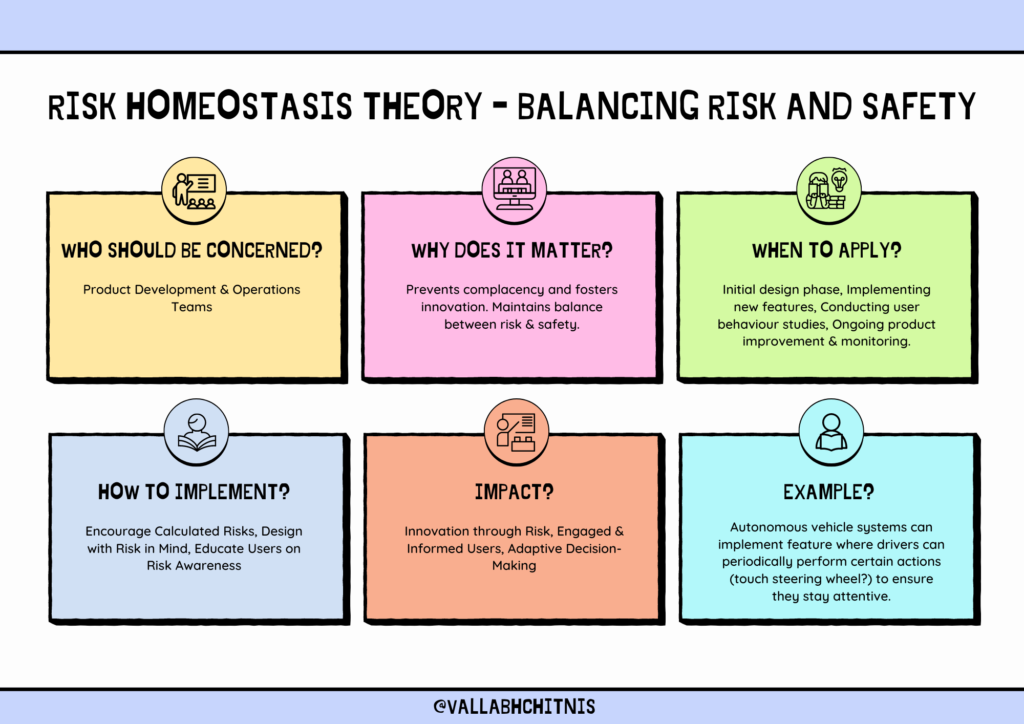Is More Safety Making Us Reckless?
Imagine you are driving a car with no seatbelt. You would drive with extreme caution. Now, how would you do the same drive with the latest safety features—seatbelts, airbags, ABS? Would you drive more aggressively? The Risk Homeostasis Theory suggests you might.
Gerald J.S. Wilde’s risk homeostasis theory asserts that individuals have a target level of risk they are willing to accept. When safety measures are improved, people may take more risks to maintain their preferred level of risk. Conversely, when they feel less safe, they become more cautious.
How do you balance risk and safety in your product development?
Risk Homeostasis Theory – Balancing Risk & Safety
